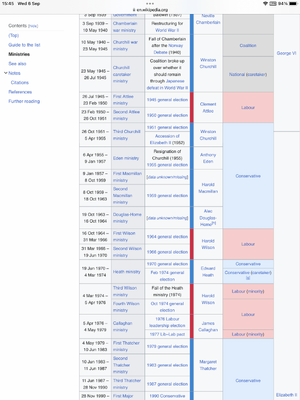- Mar 14, 2005
- 19,196
- 4,378
- 50,935
Me and the General public....I am not sure if you mean ‘we’ as in the general public. ...
Me and the General public....I am not sure if you mean ‘we’ as in the general public. ...
Glenfinnan isn't a stone viaduct - it's built of concrete, very much a pioneer in the use of it giving Sir Robert McAlpine the nickname Concrete Bob - of course it's had maintenance done but no significant replacements.Let's destroy one myth from the first post. I don't believe the Glenfinnan viaduct will still be "as built". Most stone viaducts have had considerable work done on them.
Interestingly, albeit a Civil Engineering issue, in the late 1970's on the railway at Christian Malford in WIltshire (where the old GWR main line split towards Bristol and Wales), there was a major land slip, where the embankment slipped a distance of about 100 metres into an adjacent field. It took months and months to fix, and the root cause was identified as a failure of a Brunel design of chained piles - where piles were joined by chains, and after 130 years the chains were failing...
If you search for the technical reports they will be there.Me and the General public.
Hence my OP referred to Concrete Bob. Glenfinnan isn’t the only Scottish railway structure. His mix was the strongest using real cement, sand and aggregate .No steel reinforcements were used other than Steel plates were inserted at the heads of the arches to provide additional strength.Glenfinnan isn't a stone viaduct - it's built of concrete, very much a pioneer in the use of it giving Sir Robert McAlpine the nickname Concrete Bob - of course it's had maintenance done but no significant replacements.
We called it Mundic Cancer. Sadly not covered by any insurance policies. It left a lot of very heart broken people standing financially aloneHello All, -A little off topic but somewhat aligned. In Cornwall and to an extent in Devon between around 1900 & around the early 60's, Mundic block was commonly used. Mundic's make up was of 'concrete' blocks that contained waste materials from mines, mixed with aggregate: such as beach sand. Fast forward a few decades and it became realised that the mining materials were very subject to oxidising and decay in the presence of damp conditions. We moved to Cornwall in 2000 and when looking to buy our first home found that all homes built during the time above and containing any area of block construction required a mundic test to be carried out - if it failed, then was un-mortgageable. Depending on the size / position of the affected section of the property they can be a good deal for a cash buyer / someone with building skills. Anyways just I'd share in case of interest.
If you look at the period 1950-1980 I think you will find the time in Government fairly evenly split between the Conservative and Labour Party. So the blame game is a pointless exercise, rather efforts be concentrated on sorting out the schools and hospitals without detracting from their existing budgets vI am beginning to think that the press are blowing it up out of all proportion. In our county apparently no buildings are affected.
However there was quite an amusing snippet on the news today. The current opposition are blaming the current government however the opposition were in power when most of the buildings were built. Secondly the opposition were made aware of the 30 year lifespan in the nineties and commissioned surveys and got the results. I thought it quite amusing listening to them when possibly they were at fault!
Whether in power or in opposition amazing how short the memories of all politicians become after a few years. LOL! The above is just a bit of humour and nothing more!

Good news, the first and second floors and balcony are constructed from conventional reinforced concrete beams.He did have an independent survey and he’s contacting the council planning department for records. He’s looked at the ceiling above the ground floor garage and the workshop. Both are unpainted. His view is that the “planks” are conventional concrete and before the new first floor flooring is laid he’s going to lift areas of the pine boards to access the structural members below. Also in his favour is the house was constructed about the time RAAC was going out of favour, and being a private one off build for the previous owner probably low likelihood of RAAC. So he’s just gathering information.

